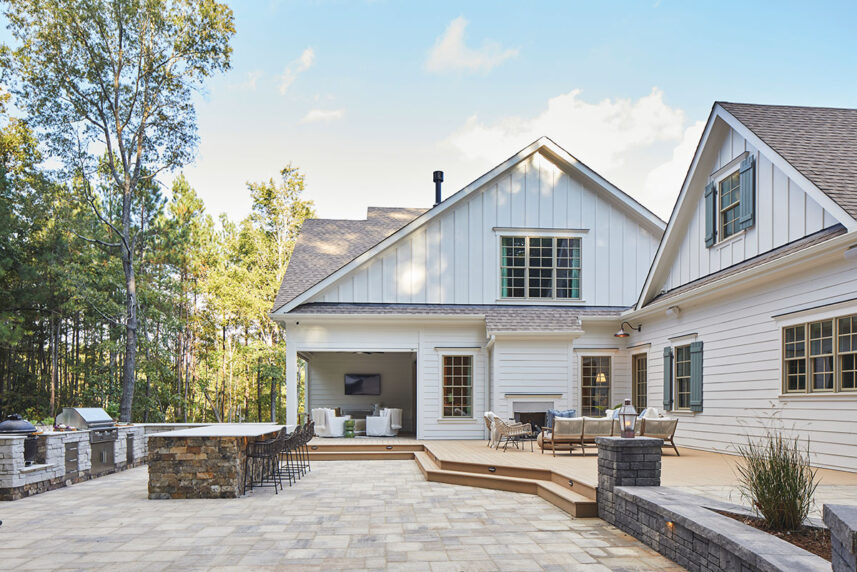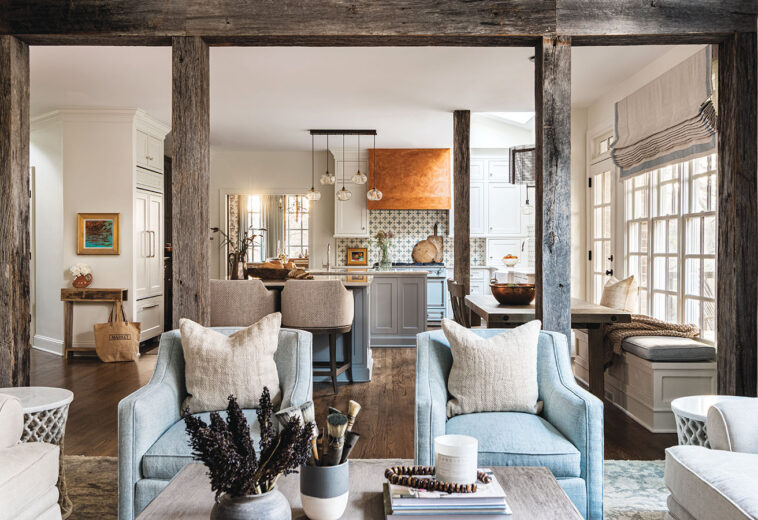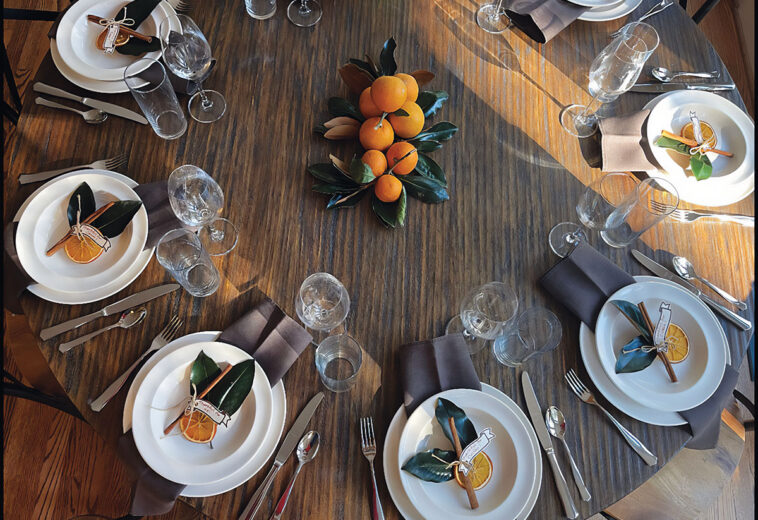Article:
Universal Design
Where attractiveness meets accessibility—for everyone
BY SAMANTHA GRATTON | PHOTOS COURTESY OF PARAGON BUILDING GROUP AND LAUREY GLENN
When you arrive at Paragon Building Group’s showcase home in Pittsboro, the first thing you see is a stately house with a large set of steps leading to a beautiful front porch. You drive up a long driveway to reach a three-car garage. As you enter the home, you are received in an enormous kitchen with warm oak floors, paneled appliances and a cozy fire going in the nearby outdoor patio fireplace.
This house is a universal-design home. It’s a house where everyone can gather or live, regardless of age, abilities or mobility. The designer home initially charms visitors with its style and beauty. What isn’t immediately apparent is the zero-step entry garage (requiring no climbing of stairs to get in), the wider-than-usual doorways, and the fully functioning elevator tucked behind a door that looks like it could just as easily be an oversized coat closet.
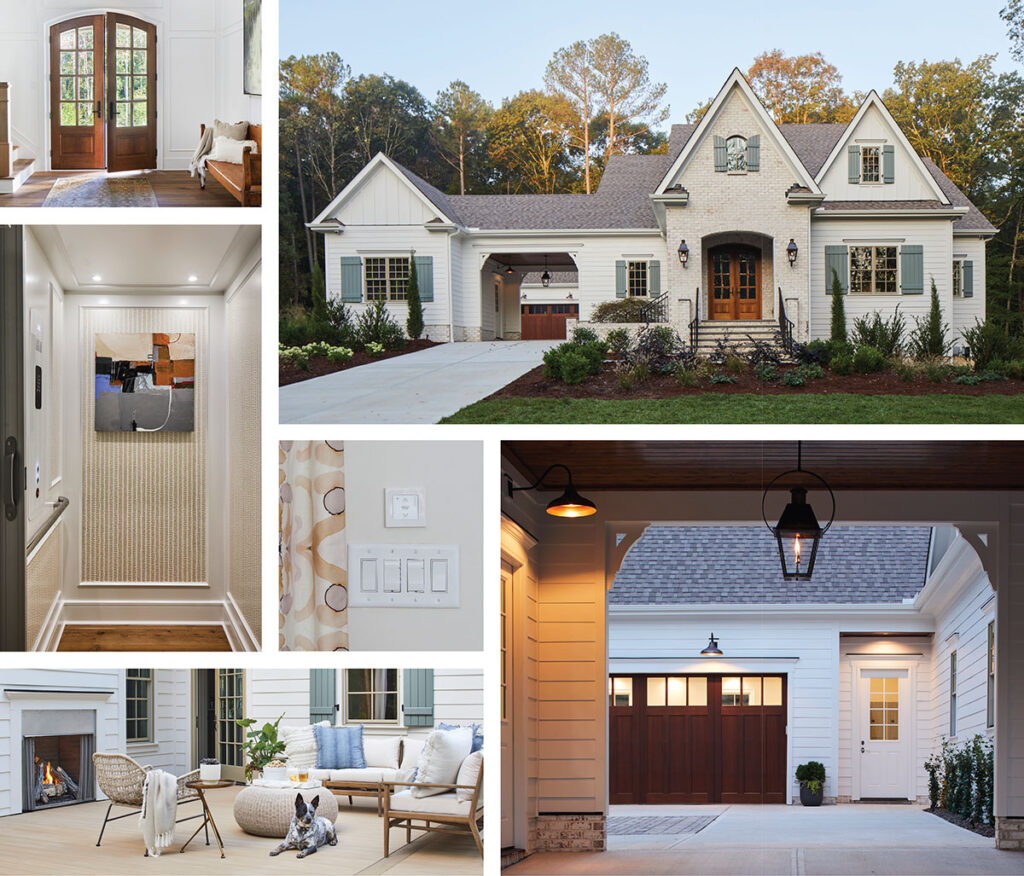
CREATING SPACES FOR TRUE HOSPITALITY
Joshua B. Mauney, president and founder of custom home builder Paragon Building Group, is passionate about universal design. After seeing the challenges that eventually forced his grandfather out of his home and the subsequent lifestyle he had in a nursing home, Mauney started looking for a more meaningful way to build homes and began using the concepts of universal design. “When you watch someone who you hold in such high esteem live in a situation where, again, it does influence their dignity, there is a conversation about safety. It’s heartbreaking. Because that’s really the time period, regardless of health and mobility, someone should enjoy. When they can’t, it just stops you dead in your tracks, and you just think, ‘There’s got to be a better way,’” says Mauney.
There are 54 specific features Paragon implements around universal design in each of their custom homes to accommodate the largest population of people at every stage of life. But instead of the stark or sterile look of handrails on the walls or grab bars in the bathroom, there’s an emphasis on beautiful aesthetics and natural light—along with, of course, function and safety. Integrating style with long-term safety features allows homeowners to make not only the home of their dreams, but also their forever home. Mauney points out that quality and value never go out of style.
“What’s so rewarding for us is that we have clients [all over the place age-wise],” says Mauney. “Our youngest was 28–29, expecting their first child. Universal design was really all about mobility inside the home, safety, raising a family, being able to expand future space as the family dynamic changes, but then having the components where, once the folks are empty nesters, they can stay for a long period of time.” Paragon’s oldest clients last year were in their early 80s, choosing to build a custom universal design home after previously living in the same home for 57 years. While the ages, life stages, design styles and physical needs all vary widely, the advantages of universal design have resonated.
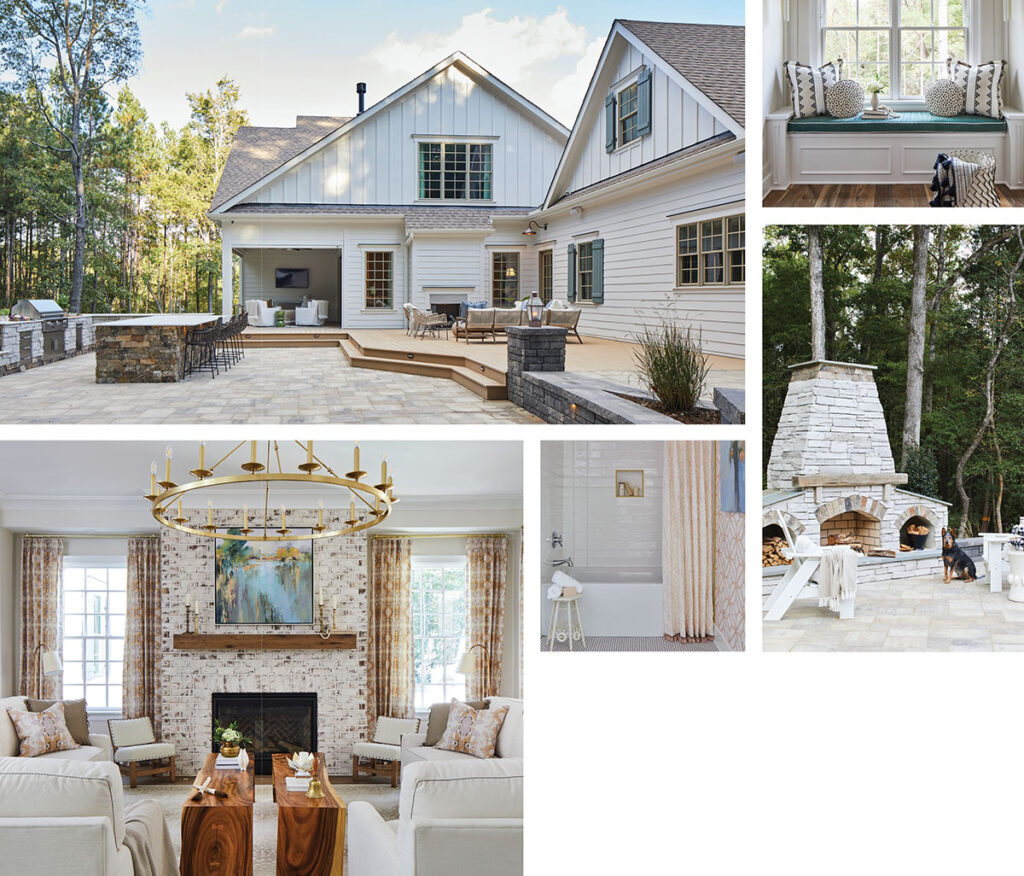
THE HISTORY OF UNIVERSAL DESIGN
“The origin story has [universal design] emerging in the 1980s as a design idea after a bunch of folks—leaders in the field—had been working in a different area: accessible design,” says Richard Duncan, executive director of The RL Mace Universal Design Institute. Duncan has 35 years of experience working with architectural and product accessibility and universal design. For accessible design, Duncan says, features like sidewalks or automatic doors were developed to benefit a smaller group of people, but in the end, the positive impact applied more broadly.
“It’s still commonly misunderstood,” adds Duncan, saying that some people think universal design is just more accessible design, or is primarily for full-time wheelchair users. Instead, he says, universal design is “the design of the built environment and products, in ways that are usable by the widest range of people possible without the need for adaptation or specialty design.”
WHY IT MATTERS
While universal design can be implemented in commercial and transportation venues and in public spaces, it can also provide numerous benefits in the home. “We weren’t intentionally seeking out a universal design home when we began interviewing builders,” says Cindy Frazier, a Paragon client who is currently building a home in Hillsborough. “However, we were aware of the concept and benefits and quickly realized it fit extremely well with both our family/age situation as well as our desired home design elements.” Frazier and her husband Mark are in their late 50s. They plan to share their home with visiting friends and family from out of town, and they appreciate the accessibility it will offer (if needed) for her parents. “We are truly hoping for this to be our ‘forever home,’ and universal design is helping ensure that’s a possibility,” says Frazier.
According to the U.S. Census Bureau, by the year 2030, one in five residents will be aged 65 or older. As a rising number of people face older age, which often comes with mobility and ability difficulties, their needs will need to be addressed. By living in a home with universal design features like wider doorways, lever door handles instead of door knobs, a walk-in shower with an adjustable shower head and a kitchen designed to be safely used by all ages and abilities, older adults are given more of an option to “age in place.”
A ranch home may be considered a universal design ideal due to the entire home being on one level. With some adjustments, though, it doesn’t have to be the only option. Duncan says a common myth is that all universal design housing has to be single-floor. In reality, he says, a universal design home needs to have four key function areas on the same floor: a bathroom, bedroom, laundry room and kitchen. Other rooms can still be on different levels. In-home elevators are one option to accommodate multiple floors. Paragon designates the space for an elevator in all of the multiple-floor homes they build. Adding wider stairs that can easily accommodate a lift is another option.
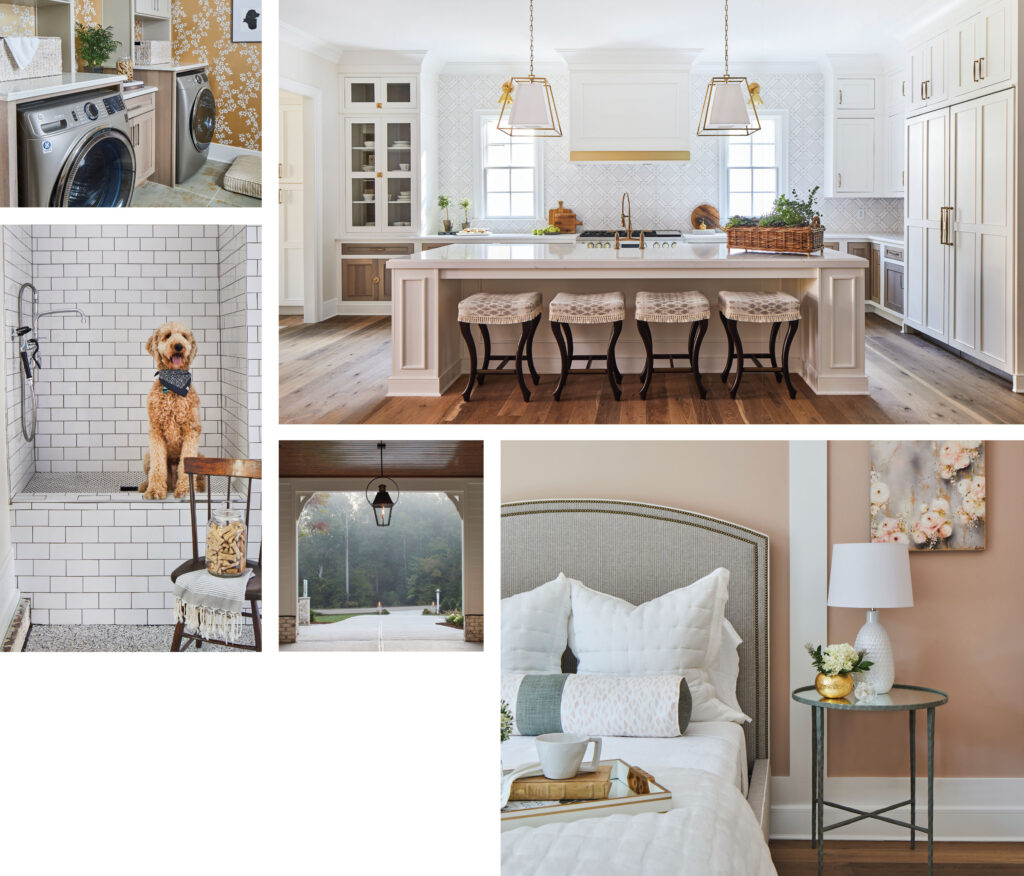
WHO BENEFITS?
Universal design is meant to benefit not just those with disabilities or mobility needs, but everyone. Choosing to incorporate more of this type of design into homes, offices and public spaces helps the community as a whole. As the demand and need for universal design features increase, so does their availability. Ideally, in the future, universal design will become the standard instead of the exception. “We’ve seen the negative effect on community, on people, and on family when you don’t build this way,” says Mauney. “To take and to showcase that it can be done anywhere in our area, for any person and at any price point—and it can—and see the effects of what that means to people is profound.”
